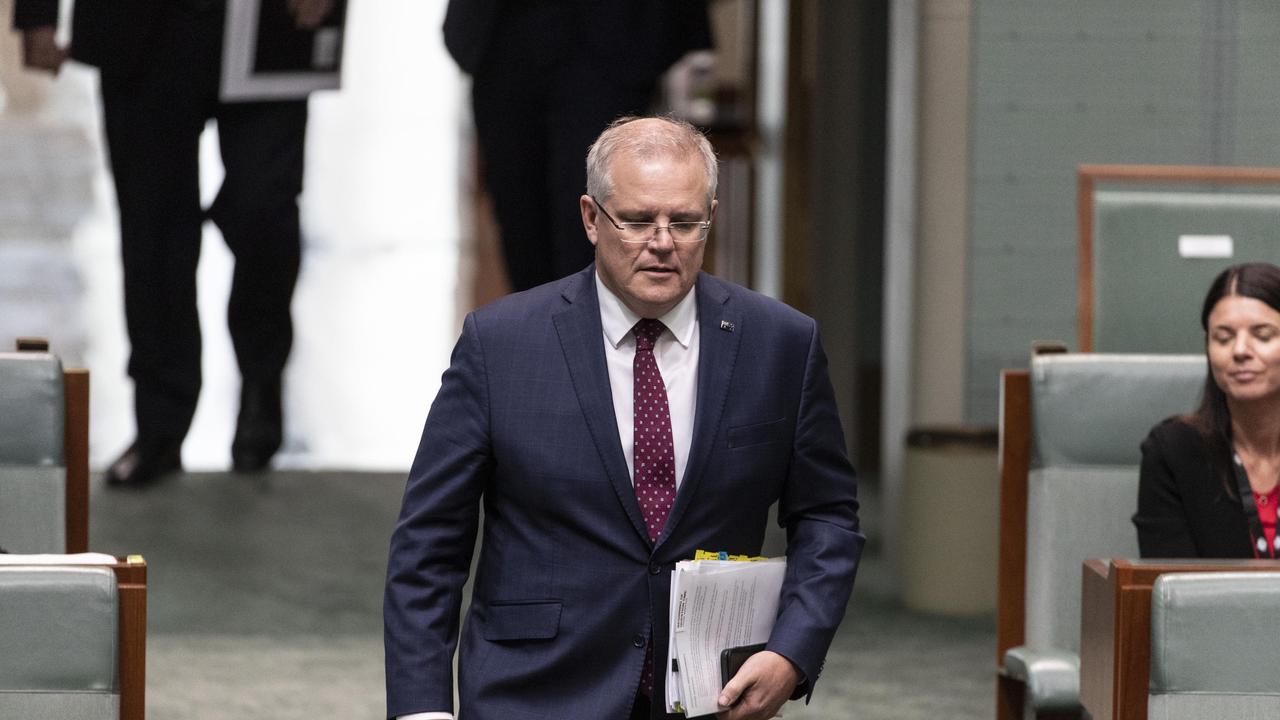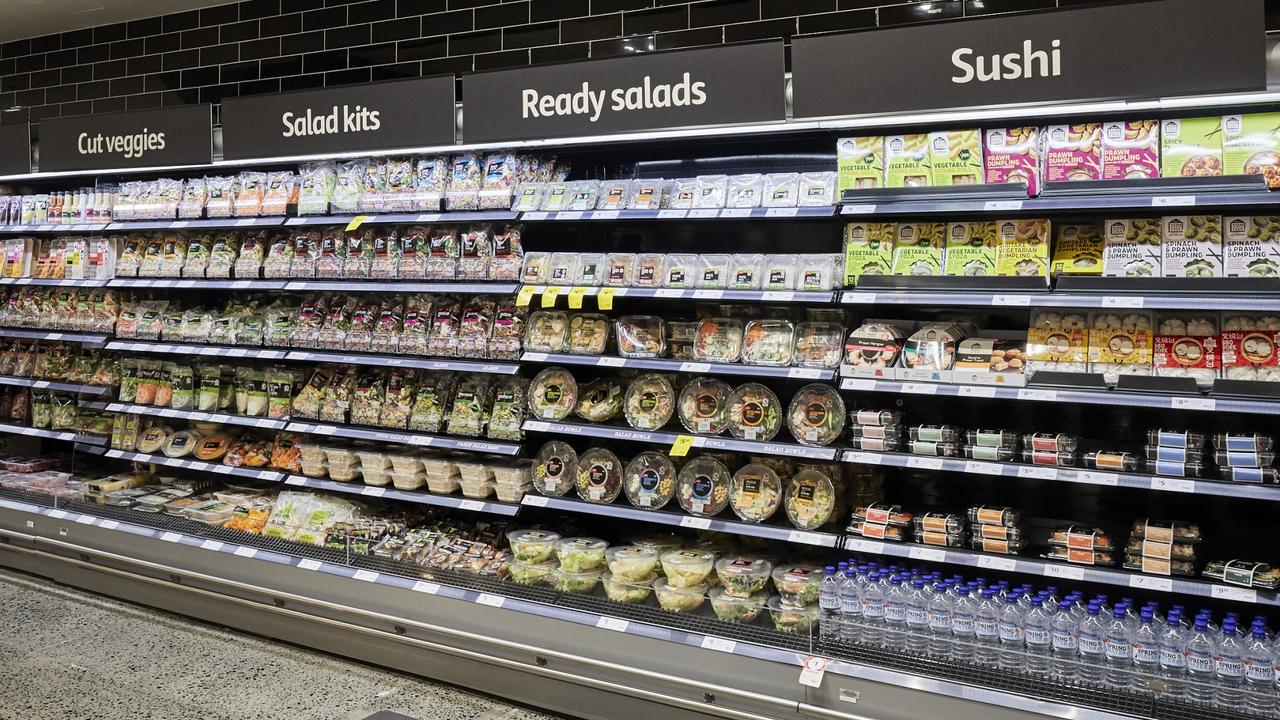Coronavirus: What ‘phase two’ of Australia’s COVID-19 response will look like
Timed supermarket visits, transport restrictions and alternate working hours could become the new norm after tonight’s national cabinet meeting.
Federal, state and territory leaders will discuss the next phase of the country’s lockdown measures with the country's chief medical officers tonight, as the coronavirus death toll rises to eight.
With the prospect of more businesses forced to close in accordance with draconian “stage two” efforts to slow the spread of the deadly virus, the meeting will also cover measures to protect workforce continuity in critical industries.
Today, Government Services Minister Stuart Robert said “hundreds of thousands, maybe a million” people were left unemployed overnight after stage one was rolled out, which included the closure of “non-essential” services.
RELATED: Follow the latest coronavirus updates
RELATED: What is social distancing?
The potential shift to stage two lockdown comes after the eighth death in Australia today.
Australia-wide, there are now more than 2000 confirmed cases of COVID-19.
In response to the worrying rise in positive test results over the past few days, Prime Minister Scott Morrison announced a raft of new measures on Sunday to contain the spread of the virus and “flatten the curve”, including closing pubs, bars, nightclubs, cinemas, casinos, indoor sporting venues, entertainment venues and places of worship.
Health Minister Greg Hunt today said the chief medical officers on Australian Health Protection Principal Committee were “assessing (the next stage) today” and would discuss with the national cabinet tonight.
“The general direction obviously is about people spending more time at home (and) obviously keeping distance,” he said.
Across the pond, Boris Johnson today announced a dramatic escalation of lockdown measures in the UK, banning gatherings of more than two people.
“We recognise and appreciate what has happened in other parts of the world and indeed all of us are learning from each other, but obviously this notion of greater isolation, more time at home, less time out in groups is what we are encouraging,” Mr Hunt said.
He stressed that the current measures will not be the last stage.
“I think I should be very upfront and honest about that,” he said. “Right as we speak, those next stages are being designed and the timing and the implementation measures for it are being carefully considered.”
Asked for more details on what stage two would entail, Mr Hunt said he would “respectfully leave that to the medical expert panel working on that”.
“Above all else, people don't need to wait,” he said.
“What we're doing here is making sure that the message of the Chief Medical Officer, the Chief Nursing and Midwifery Officer and the government is, if you can take steps to spend time at home, do that.”
So what might the next phase look like?
‘MANDATORY MONITORING OF TRAVELLERS’
Professor Mary Louise McLaws, an advisor to the World Health Organisation and infection control expert, said most COVID-19 cases in Australia have been related to travel.
She told news.com.au the most important thing we should be doing at this stage is frequent checks on recent travellers, to ensure they’re being diligent about remaining in self-isolation for 14 days.
She said “mandatory face-to-face monitoring” of recent travellers was crucial, whether through random home visits, and a designated phone or the use of electronic bracelets.
Failing this, and if the infection rate continues to soar, Prof McLaws warns that the rules and restrictions in Australia are likely to become more harsh.
With thousands of Australians scrambling to return home, it also understood some members of the cabinet have flagged implementing a deadline for overseas and interstate travellers to return to their home state before beginning a period of self-isolation.

HOW LIFE IN AUSTRALIA COULD CHANGE
Prof McLaws said it’s “likely” Australia will end up with a time-shared grocery-shopping system to ensure everyone can purchase essential items without coming into close physical contact with one another.
China’s Hubei province implemented time-shared supermarket trips, where one member per household was allowed out to shop every few days.
“I think just having one family member (per household) going out for groceries helps enormously,” she said.
Though we are currently still in stage one, she says it will be at least another week before we know how effective our new measures will be.
“If we don’t start seeing a decrease in our doubling of cases, we’ll have to start enforcing more,” she said.
At present, Australia’s COVID-19 cases are doubling roughly every three days. Prof McLaws says we need to lower this to six days or more, which is about the rate that starts to flatten curve and helps us avoid ending up in a Europe-level health catastrophe.
Essential services such as supermarkets, pharmacies, transport and access to health workers will remain safe and open. But the way we use them may change.
An example of this is staggering the start and finish times that people work, to ensure those who still have to catch public transport can still keep an appropriate physical distance from each other.
She also said buses should either provide hand wipes or have a cleaner, which would “send a great message” about cleanliness and social distancing.

Prof McLaws stressed the need for a broader information campaign, with clear and direct messages encouraging people to be conscious of when they speak and how they interact with others.
“We can’t keep that magic 2.5-metre distance. The flu has taught us that, and we don’t know how far COVID-19 can spread. So let’s try and reduce the spread in other ways.”
She also said medical professionals, such as therapists, should be allowed to conduct online appointments to minimise contact while still providing essential services to people.
At this stage, Australia’s future measures are hypotheticals. But Prof McLaws suggested we’re playing catch-up next to our neighbours in New Zealand.
New Zealand prime minister Jacinda Ardern today announced that the country would upgrade to a level 4 response to the virus in 48 hours. Level 4 means people will be instructed to stay at home, schools and universities will be closed, as well as non-essential businesses, major reprioritisation of health services, and severely limited travel.
New Zealand currently has 103 confirmed cases of COVID-19, while Australia has more than 15 times that number.
Prof McLaws praised New Zealand’s approach, saying our neighbours are doing “exactly the right thing” to combat the spread of COVID-19.
“We should’ve gone all-out a while ago,” Prof McLaws said. “I think New Zealand is doing a great job, because they’ve isolated themselves from the rest of the world, and now they will go into lockdown for a short period. Once they believe they’ve got a handle, they’ll be able to relax their rules inside the country, but remain isolated.”
Above all, she said it was important to take decisive action earlier on, rather than wait until things get bad. “You’ve got to make tough practical decisions early on, and the numbers will reflect that.
“But instead, the numbers are now driving what we’re doing.”
Originally published as Coronavirus: What ‘phase two’ of Australia’s COVID-19 response will look like



